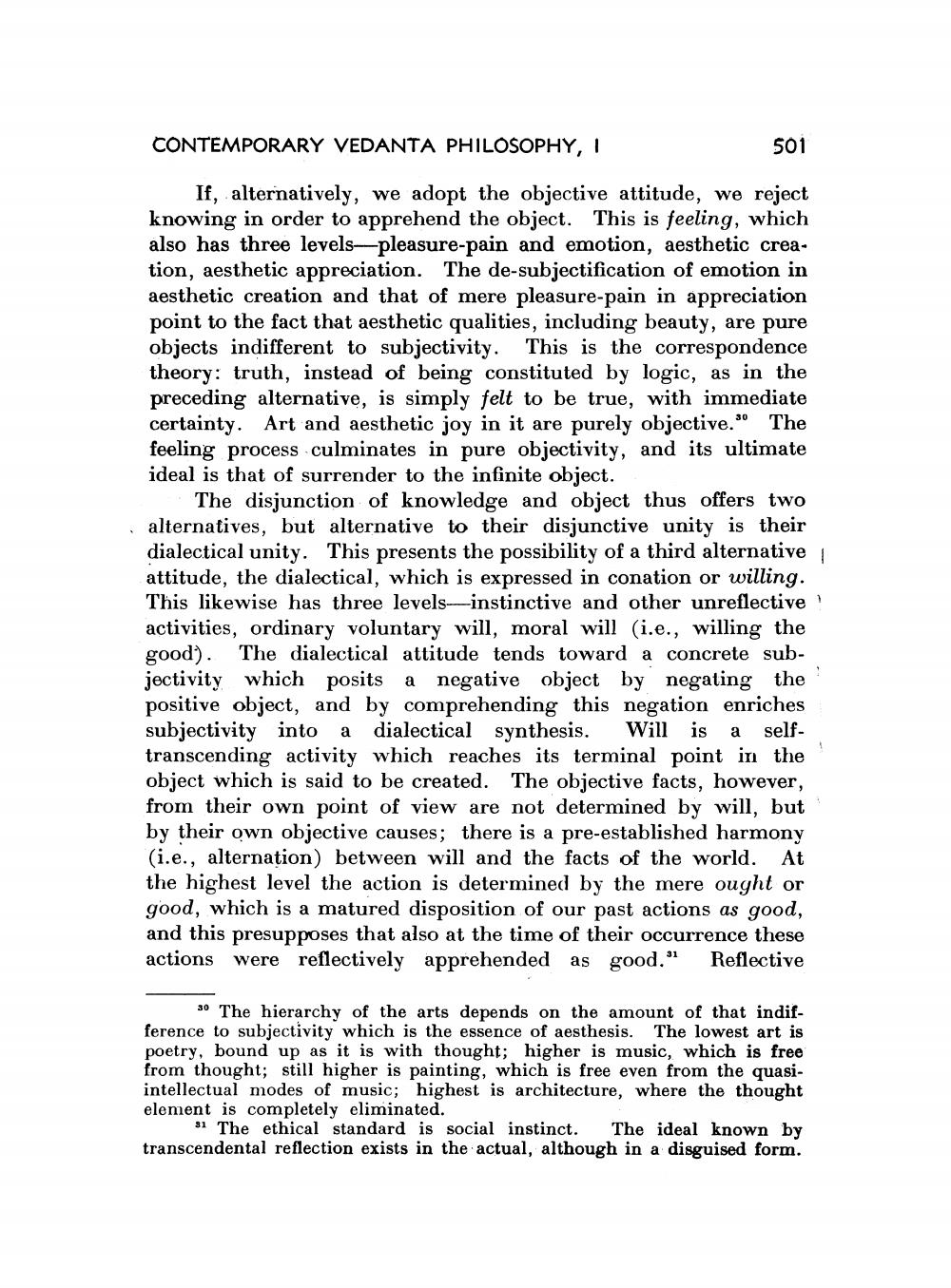________________
CONTEMPORARY VEDANTA PHILOSOPHY, I
501
If, alternatively, we adopt the objective attitude, we reject knowing in order to apprehend the object. This is feeling, which also has three levels-pleasure-pain and emotion, aesthetic creation, aesthetic appreciation. The de-subjectification of emotion in aesthetic creation and that of mere pleasure-pain in appreciation point to the fact that aesthetic qualities, including beauty, are pure objects indifferent to subjectivity. This is the correspondence theory: truth, instead of being constituted by logic, as in the preceding alternative, is simply felt to be true, with immediate certainty. Art and aesthetic joy in it are purely objective. The feeling process culminates in pure objectivity, and its ultimate ideal is that of surrender to the infinite object.
The disjunction of knowledge and object thus offers two alternatives, but alternative to their disjunctive unity is their dialectical unity. This presents the possibility of a third alternative attitude, the dialectical, which is expressed in conation or willing. This likewise has three levels-instinctive and other unreflective! activities, ordinary voluntary will, moral will (i.e., willing the good). The dialectical attitude tends toward a concrete subjectivity which posits a negative object by negating the positive object, and by comprehending this negation enriches subjectivity into a dialectical synthesis. Will is a selftranscending activity which reaches its terminal point in the object which is said to be created. The objective facts, however, from their own point of view are not determined by will, but by their own objective causes; there is a pre-established harmony (i.e., alternation) between will and the facts of the world. At the highest level the action is determined by the mere ought or good, which is a matured disposition of our past actions as good, and this presupposes that also at the time of their occurrence these actions were reflectively apprehended as good." Reflective
30 The hierarchy of the arts depends on the amount of that indifference to subjectivity which is the essence of aesthesis. The lowest art is poetry. bound up as it is with thought; higher is music, which is free from thought; still higher is painting, which is free even from the quasiintellectual modes of music; highest is architecture, where the thought element is completely eliminated.
31 The ethical standard is social instinct. The ideal known by transcendental reflection exists in the actual, although in a disguised form.




